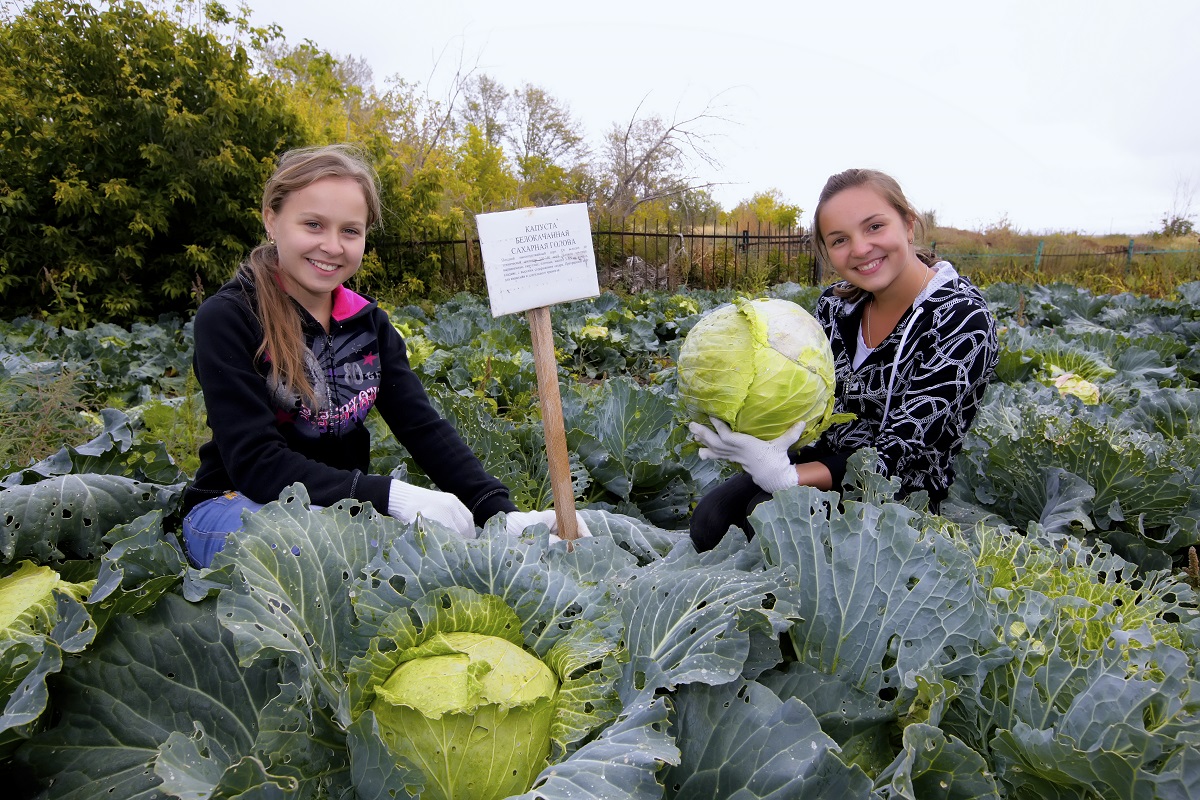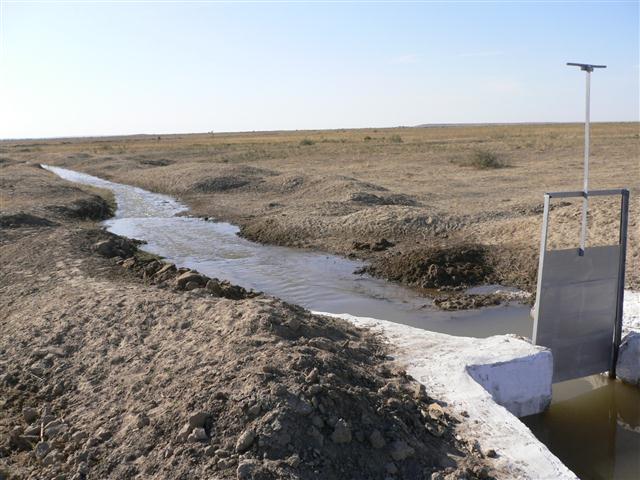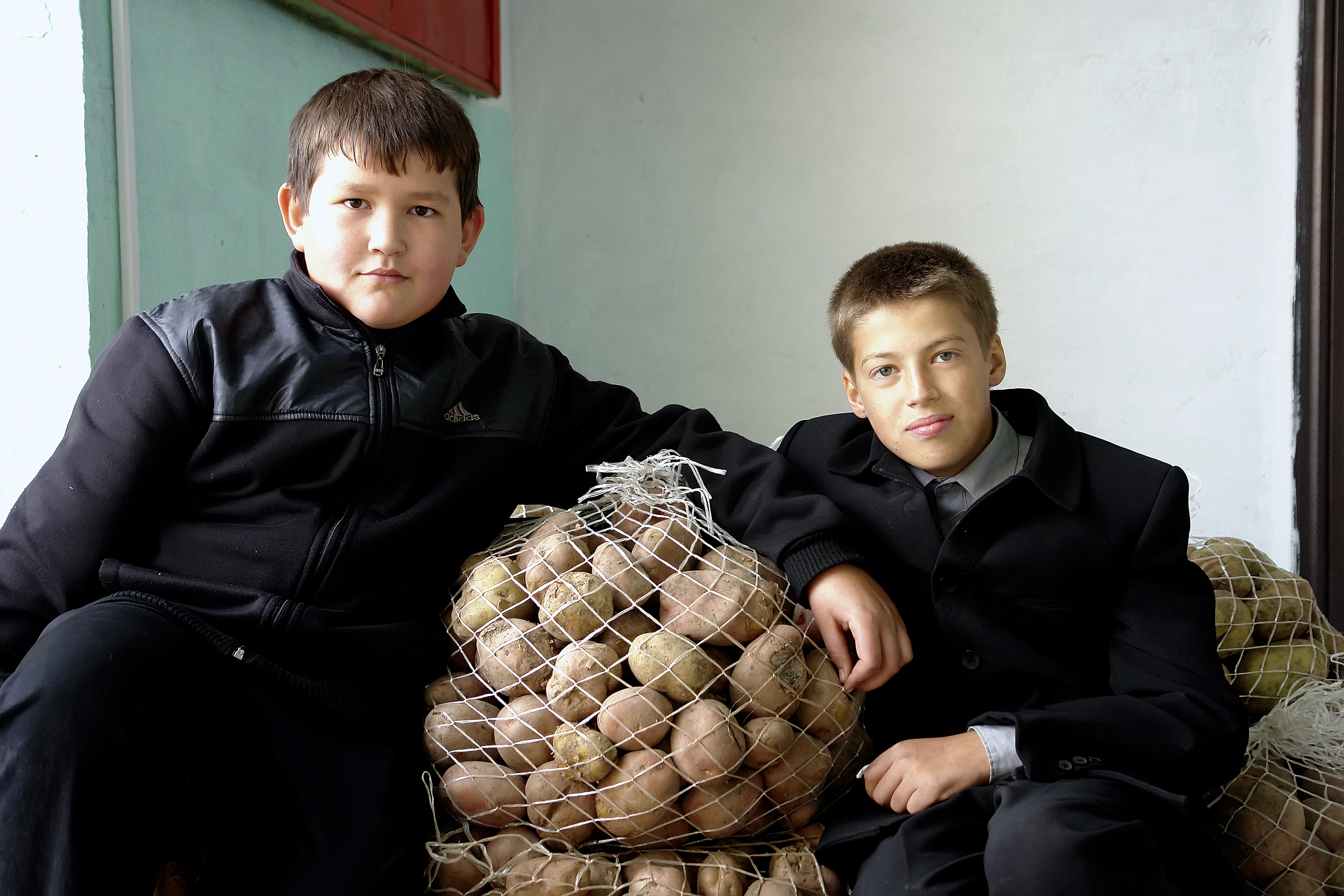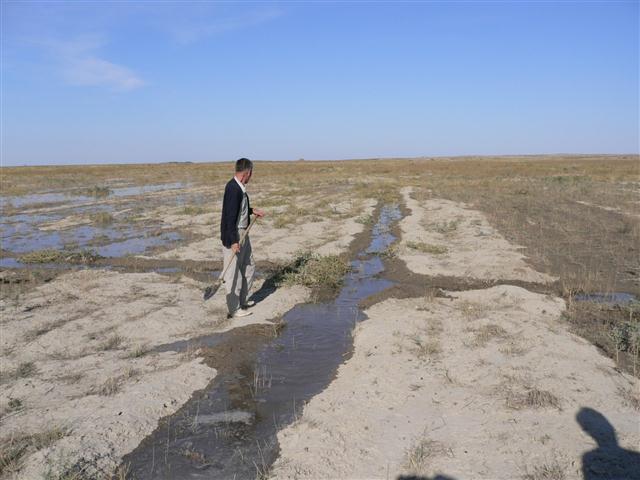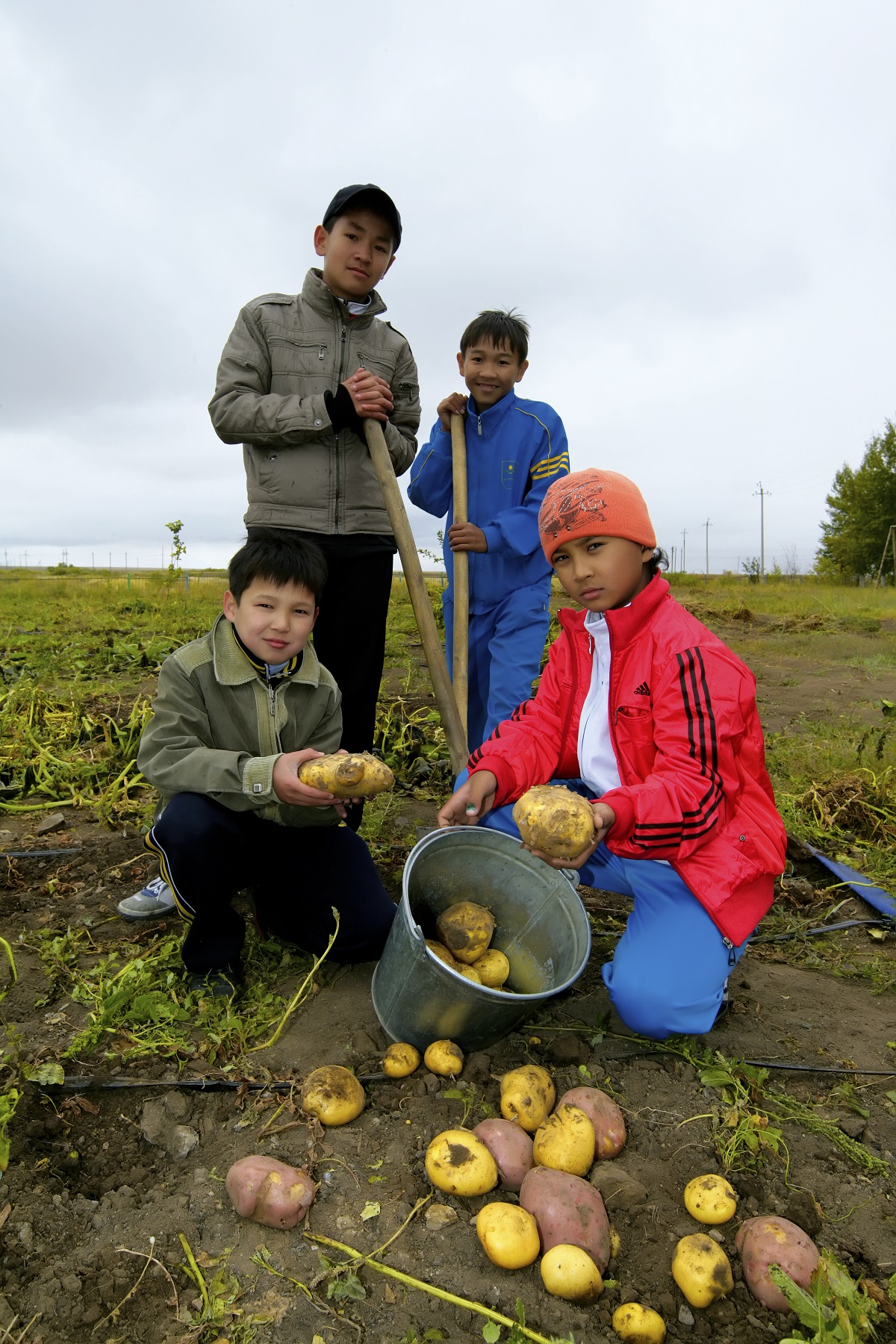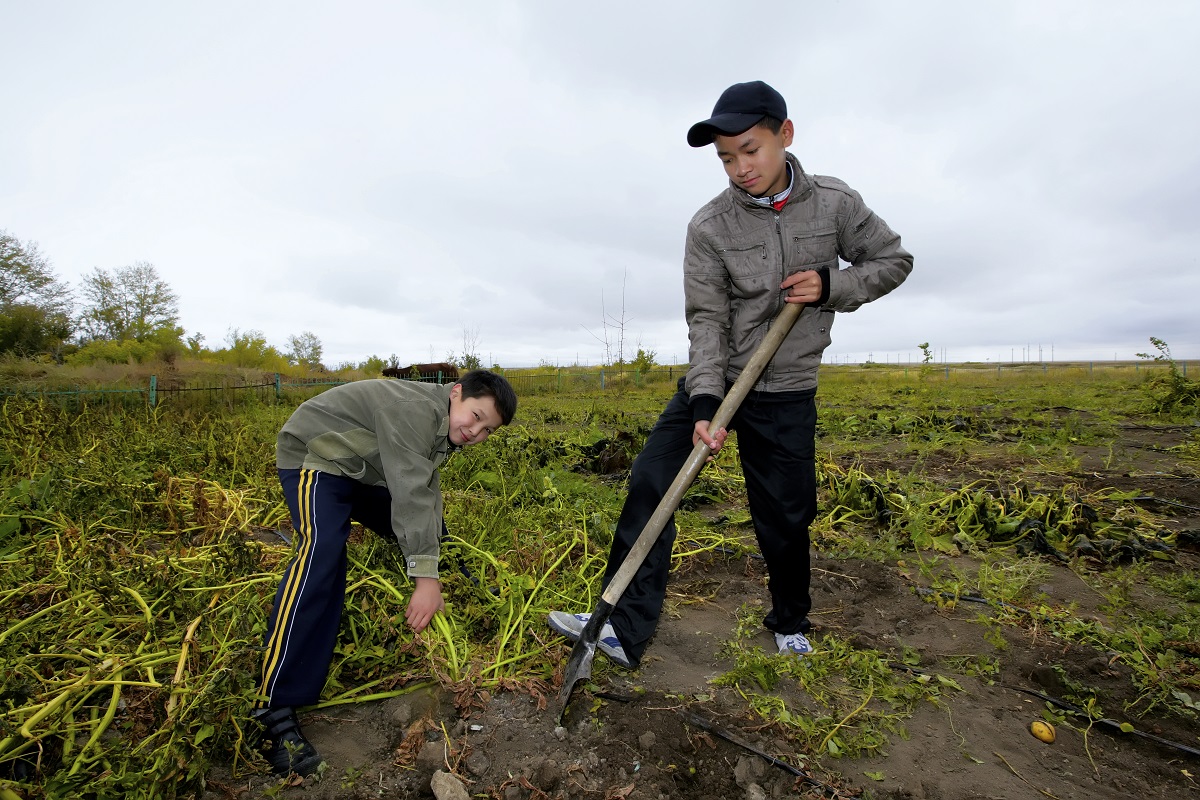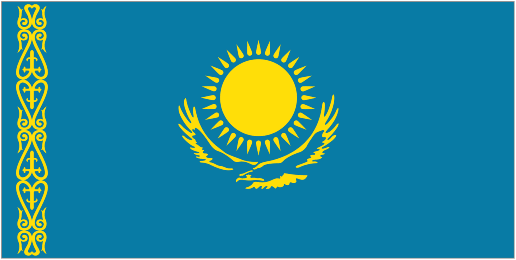CBA Kazakhstan: Adapting Farming Practices to Increasing Temperatures and Aridity in Akmola Oblast
Project Overview
Arnasai is a village of 1100 people, 50 km southeast of Astana (Kazakhstan's capital), on the banks of the Ishim River. The village is located near Astana's main reservoir, and most local people live on subsistence agriculture and summer-season irrigated horticulture. The climate is extremely continental and dry, with long winters and hot summers. Summer precipitation in the area evaporates quickly and is not easily used by plants or pastoralists, so only winter precipitation is agriculturally useful. Climate change impacts, such as increasing winter temperatures and increasing summer evapotranspiration rates, have led to a decline in (useful) winter snow and a rise in (less useful) rainfall. Increasing aridity will likely tighten water supplies to Astana city, as well as worsen erosion and potential siltation of reservoirs.
The Community-Based Adaptation project seeks to reduce land degradation through capacity-building for improved agricultural techniques, while developing adaptive measures to enable less water-intensive farming. The adaptive methods being piloted include more-efficient horticultural irrigation, as well as winter-grain farming, with the use of spring snowmelt moisture rather than summer irrigation. The project will also develop a short film and manual aimed at farmers to facilitate project replication in other areas.
* This project is part of Kazakhstan's Community-Based Adaptation portfolio. *
Project Details
Arnasai Village is located near Astana Water Reservoir, which is the main drinking water supply for Astana City, Kazakhstan. The reservoir’s water level has dropped considerably in recent years. Community members now have difficulty using Astana Water Reservoir for their home gardens and irrigated fields.
In recent years, local agricultural communities have shown growing concerns about climate change. They have experienced hotter and drier summers; milder winters; and cold, frozen springs that delay early weed growth. Summer precipitation is effective only when the level exceeds 15mm/day. The main reserve of soil moisture is made by cold season rainfall, which is efficiently used by farmers and agricultural producers when dealing with spring crops.
This Community-Based Adaptation project involves farmers and rural producers in land and water resource demonstrations and trainings designed to improve agricultural productivity and decrease environmental impacts. The project will demonstrate alternative water-saving irrigation technologies (drip irrigation and the use of special water-saving nozzles on sprinklers) as part of an integrated approach to farming on increasingly marginal land. More resilient varieties and effective crop rotation systems will be piloted in some winter cereal crops (wheat, barley, rye) to facilitate stable yields even in dry years.
The goal of the project is to demonstrate new agricultural practices that mitigate the risks of reduced water supply levels and actually benefit from the climatic changes that are redefining winters in the project area. Local inhabitants will develop demonstration sites, utilize special equipment for drip irrigation, and assist a public awareness campaign in the district. 2,100 inhabitants of the village and district will be involved in the project.
Key Results and Outputs
Outcome 1 (co-financing): Baseline land degradation problems addressed through introduction of improved agronomic technologies.
Demonstrate sustainable agricultural practices (minimal tillage, etc.) (Output 1.1) and water-efficient grain-farming practices (Output 1.2) in pilot sites.
Outcome 2 (co-financing): Community awareness raised on efficient watering methods
Awareness campaign, community coordination group, and multi-stakeholder agreement on rational use of project site resources created to spread water-efficient methods (Output 2.1).
Outcome 3 (CBA-funded): Raised capacity of communities and national stakeholders to implement/support adaptation measures
Train farmers, community members, and youth on improved irrigation practices (Output 3.1). Develop a short film (Output 3.2) and manual for farmers (Output 3.3) on project’s successes with climate-adapted agricultural techniques, focusing on winter grain farming.
Outcome 4 (CBA-funded): Alternative irrigation systems and new farming technologies for cereal crops piloted
Pilot more efficient summer irrigation technologies focused on summer grain crops (Output 4.1). Pilot drip irrigation technologies focused on horticulture (Output 4.2) and winter grain production demonstrations (Output 4.3).
Reports and Publications
Annual Reports
Case Study
PIFs
Monitoring and Evaluation
Monitoring and evaluation for community-based adaptation is a new field, and the CBA project is piloting innovative approaches to evaluating the success of locally-driven adaptation projects, and generating lessons to inform ongoing practice.
Key considerations in M&E for CBA include:
- Grounding M&E in the local context: M&E for CBA should avoid overly rigid frameworks, recognizing community heterogeneity and maintaining local relevance
- Capturing global lessons from local projects: CBA projects are highly contextualized, but lessons generated should be relevant to stakeholders globally
- Incorporation of both quantitative and qualitative indicators: to ground projects in tangible changes that can be objectively evaluated, and to capture lessons and case studies for global dissemination
To these ends, the CBA project uses three indicator systems: the Vulnerability Reduction Assessment, the Small Grants Programme Impact Assessment System, and the UNDP Climate Change Adaptation Indicator Framework.
The Vulnerability Reduction Assessment (VRA)
The VRA is a question-based approach with the following aims:
- To make M&E responsive to community priorities
- To use M&E to make projects more accountable to local priorities
- To make M&E capture community ideas and local knowledge
- To gather community-level feedback to guide ongoing project management
- To generate qualitative information
- To capture lessons on specific issues within community-based adaptation
- To generate case studies highlighting adaptation projects
The VRA follows UNDP's Adaptation Policy Framework, and is measured in a series of meetings with local community stakeholders. In these meetings, locally-tailored questions based on standard VRA questions/indicators are posed, and the community assigns a numerical score on a 1-10 scale for each question. Progress is evaluated through changes in scores over the course of implementation, as well as through qualitative data collected in community discussions surrounding the exercise.
UNDP has developed a Users Guide to the VRA (Espanol) (Francais) as a tool to assist practitioners to conceptualize and execute VRA measurements in the context of CBA projects.
The SGP Impact Assessment System (IAS)
The CBA, being a project of the GEF Strategic Priority on Adaptation, aims to increase the resilience of ecosystems and communities to the impacts of climate change, generating global environmental benefits, and increasing their resilience in the face of climate change impacts. To this end, the CBA projects use the SGP's impact assessment system for monitoring achievements in GEF focal areas (focusing primarily on biodiversity and sustainable land management).
The IAS is composed of a number of quantitative indicators which track biophysical ecosystem indicators, as well as policy impact, capacity development and awareness-building.
UNDP Climate Change Adaptation Indicator Framework
CBA projects also track quantitative indicators from UNDP's adaptation indicator framework, corresponding to the thematic area on natural resources management. More information on UNDP's indicator framework can be found on the UNDP climate change adaptation monitoring and evaluation website.
* This description applies to all projects implemented through UNDP's Community-Based Adaptation programme. Specific details on this project's M&E will be included here as they become available. *

